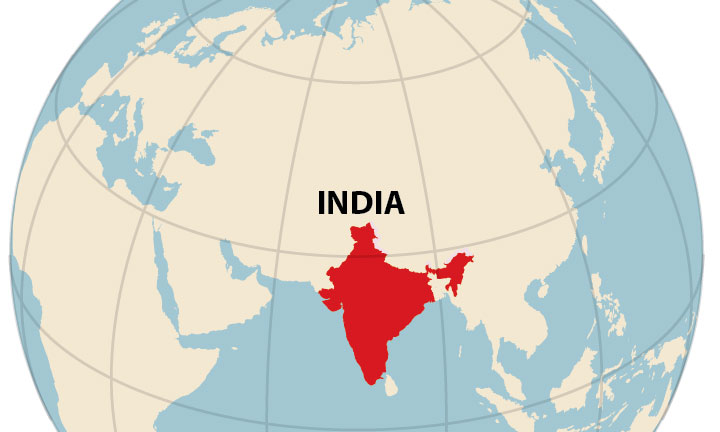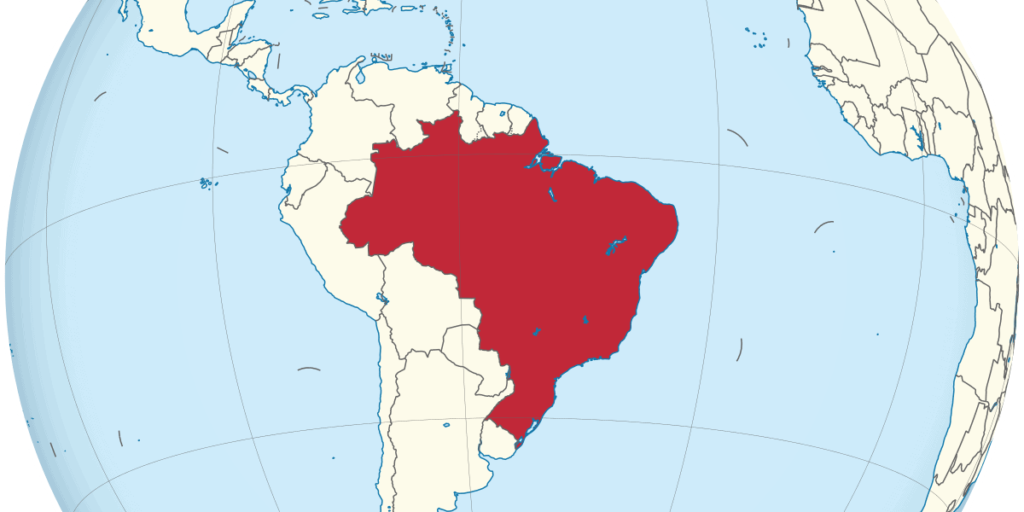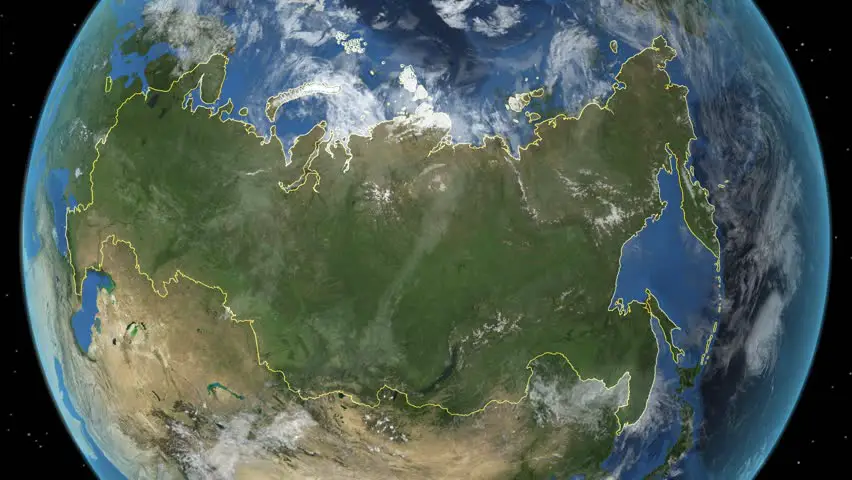This post is about the Largest Countries in the world covering the most land areas of the globe.
We, humans, have split the surface of the Earth into many nations. When it comes to the vastness of our planet, certain countries stand out as true giants, dominating the world map with their sheer size.
Some of them are true giants such as Russia, Canada, the United States, China, Brazil, and Australia, these nations cover expansive territories that span continents.
We have referred our research to countries and dependencies from the United Nations Statistics Division.
These are the top 10 largest countries in the world by area:
10. Algeria – 2,381,741 Km²

Algeria is a nation in North Africa with a Mediterranean shoreline and an expanse of the Saharan desert.
This country has a total area is 2.38 million square kilometers and is the largest country in Africa (the second is the Democratic Republic of the Congo).
It has a 998 km length Mediterranean coastline with a huge Algerian Sahara stretching across its boundaries with Western Sahara to its west, Niger and Mali all the way to the south.
Desert regions dominate approximately 90% of the country’s topography, while elevated areas add further geographical interest.
9. Kazakhstan – 2,724,900 Km²

Kazakhstan is the largest landlocked country in the world, located in Central Asia, and is a former Soviet Republic (the biggest nation ever).
It stretches from the eastern Caspian Sea to the Altai Mountains on its eastern frontier with China and Russia.
The 2.72 million square kilometers of Kazakhstan extend across vast grasslands and mountains.
A hot and moist climate prevails for most of the year but is not quite desert-like.
Kazakhstan experiences a wide variety of temperatures throughout the year, although, in Kazakhstan, it does not get as cold as it does in parts of its neighbor to the north, Russia.
For its landscape and horses, the country is pretty popular.
8. Argentina – 2,780,400 Km²

Situated in the southernmost part of Central America, Argentina spans 2,780,400 square kilometers.
This diverse country offers a wide range of geography, from tropical regions in the north to freezing glacial cold regions in the south.
Argentina’s vast landscapes encompass awe-inspiring wonders such as the Andes Mountains, the mesmerizing Iguazu Falls, and the vast plains of the Pampas.
7. India – 3,287,590 Km²

India has 3.29 million square kilometers of land, placing it in the seventh position among the largest countries in the world.
Despite being smaller in size compared to Europe, India boasts a population larger than the entire European Union combined.
Europe has 743 million inhabitants, while India has over 1.2 billion people.
India’s population density is around 1069 pop./per square mile.
Geologically, India is located on its own subcontinent.
Geographically and culturally diverse, India showcases a rich tapestry of traditions, languages, and landscapes, once separated from its Asian neighbors by an ancient sea.
6. Australia – 7,692,024 Km²

Australia is more than twice the extent of India, at approximately 7.69 million square kilometers, and is by far the largest country in Oceania.
It is so big that still it’s highly debated whether Australia is an island, landmass, or an entire continent.
Australia as a continent is surrounded by many small island nations and is the only big country in the overall South Pacific.
The vast majority of its population lives in seaside cities like Sydney in the east, Melbourne in the south, Brisbane, and Perth in the west.
It’s because the Australian Outback (remote interior) is one of the driest and hottest areas in the world.
Australia is renowned for its spectacular and often deadly wildlife, along with severe weather and topography.
5. Brazil – 8,515,767 Km²

Brazil is home to much of the world’s biggest rainforest, the Amazon, and is the largest country by area in South America.
Brazil is the fifth-largest nation in the world by area, with 8.5 million square kilometers and over 208 million people, and the fifth most populated country in the world.
Its eastern side is blessed with a stunning 8,000-kilometer Atlantic coastline.
Major cities like Rio de Janeiro and São Paulo thrive along this coastal stretch, blending urban sophistication with breathtaking natural surroundings.
4. China – 9,706,961 Km²

Officially known as the People’s Republic of China, this East Asian nation is the fourth-largest country in the world, covering approximately 9,560,960 square kilometers.
With a population of around 1.404 billion, China showcases a diverse range of cultures and landscapes.
From the bustling cities of Beijing and Shanghai to the breathtaking beauty of the Great Wall and the picturesque landscapes of Guilin, China offers a captivating blend of ancient traditions and modern marvels.
3. United States – 9,831,510 Km²

The United States, occupying 9,833,517 square kilometers, holds the distinction of being the third-largest country globally.
Located in North America, bordered by Mexico in the south and Canada in the north, the United States has a variety of flora and fauna.
Divided into three distinct regions, the United States offers a range of landscapes.
The Pacific regions are renowned for a year-round warm climate and lengthy beach expanses along the California shore, west of the Rocky Mountains.
The great plains extend from Canada to Mexico, tucked between the Rockies and the Mississippi River, providing the United States one of the most fertile growing fields in the world.
Finally, the third geographical part of the country is the Mississippi River basin, which acts as oxygen to manufacturing hubs, with significant towns scattered across it.
2. Canada – 9,984,670 Km²

Canada is the second-largest country in the world by landmass and the biggest in the western hemisphere.
It’s because ten provinces and three territories cover 9.98 million square kilometers from the Atlantic to the Pacific and north to the Arctic Ocean.
This implies that with a population density of 4 individuals per square kilometer, the total 35 million people in Canada could have around 61 acres of land for each.
Canada’s immense cold tundra, between the Arctic and the United States, stretches until the North Pole.
Split as its southern neighbor, the Rocky Mountains lie from its north to south in the western part of the nation, the snowy arctic circle in its northeast, and grasslands covering most remaining areas.
1. Russia – 17,098,242 Km²

Covering a staggering area of 17,075,200 square kilometers, Russia reigns as the biggest country in the world by area.
I will not exaggerate, but in Russia, when people on the western frontier wake up, individuals on the eastern side are having dinner.
It stretches across multiple time zones, with a population of 143 million people.
To put its vastness into perspective, Russia could offer a square kilometer of land to every 10 individuals within its borders.
Comparatively, the United States would have 30 people per square kilometer.
In fact, Russia is larger than the combined surface area of Pluto, further emphasizing its immensity.
Hope you liked this post of the top 10 largest countries in the world, and if you do, please share these cool facts with your friends on social media by clicking below.
